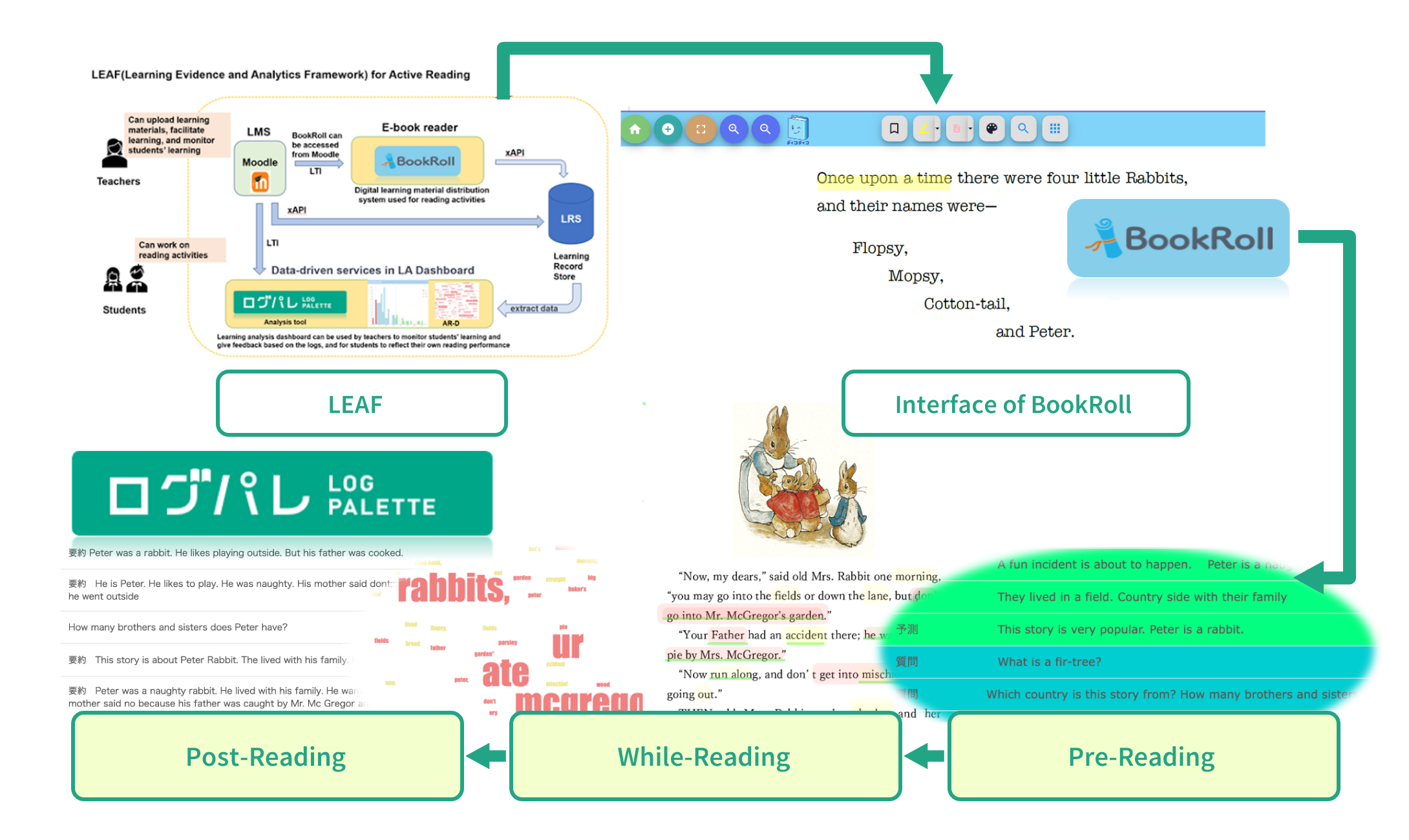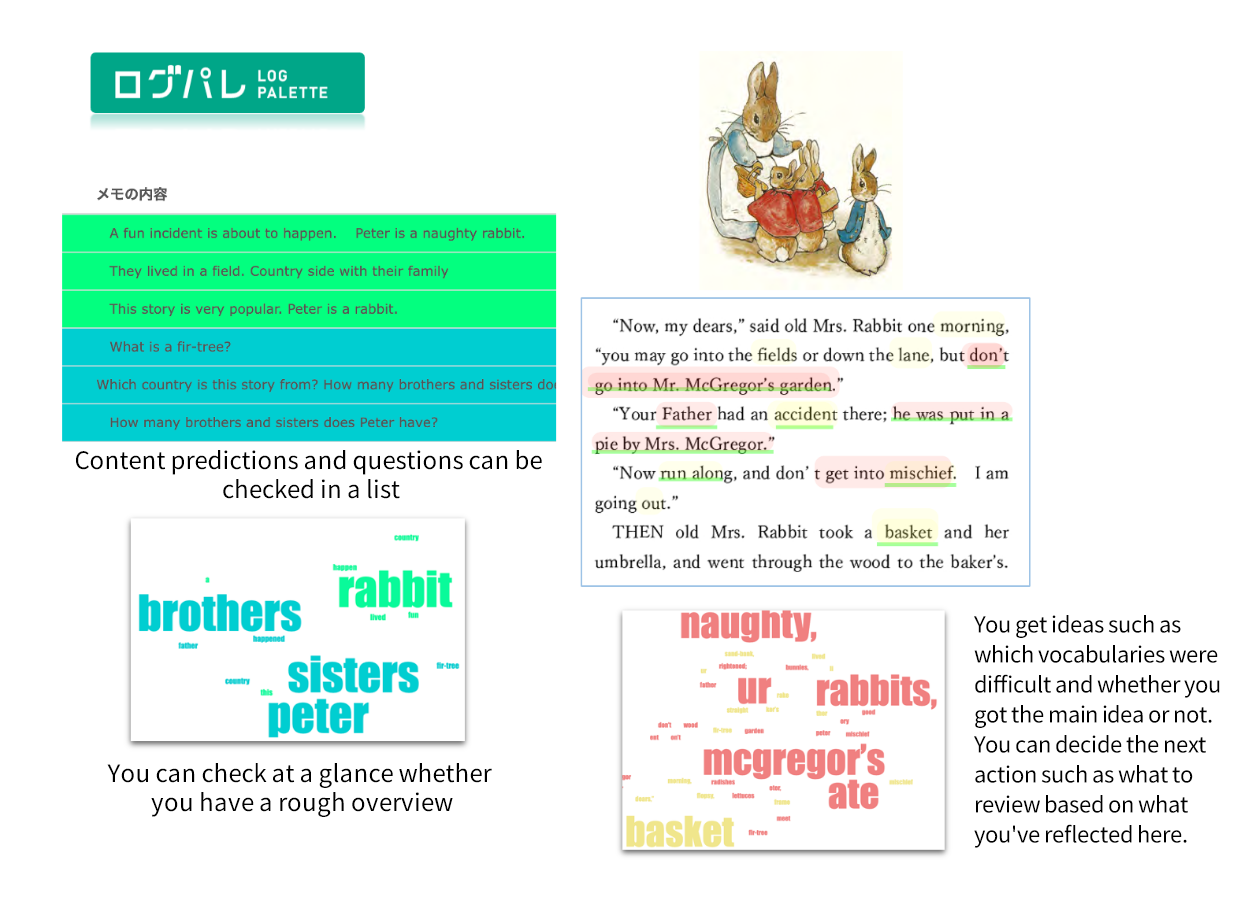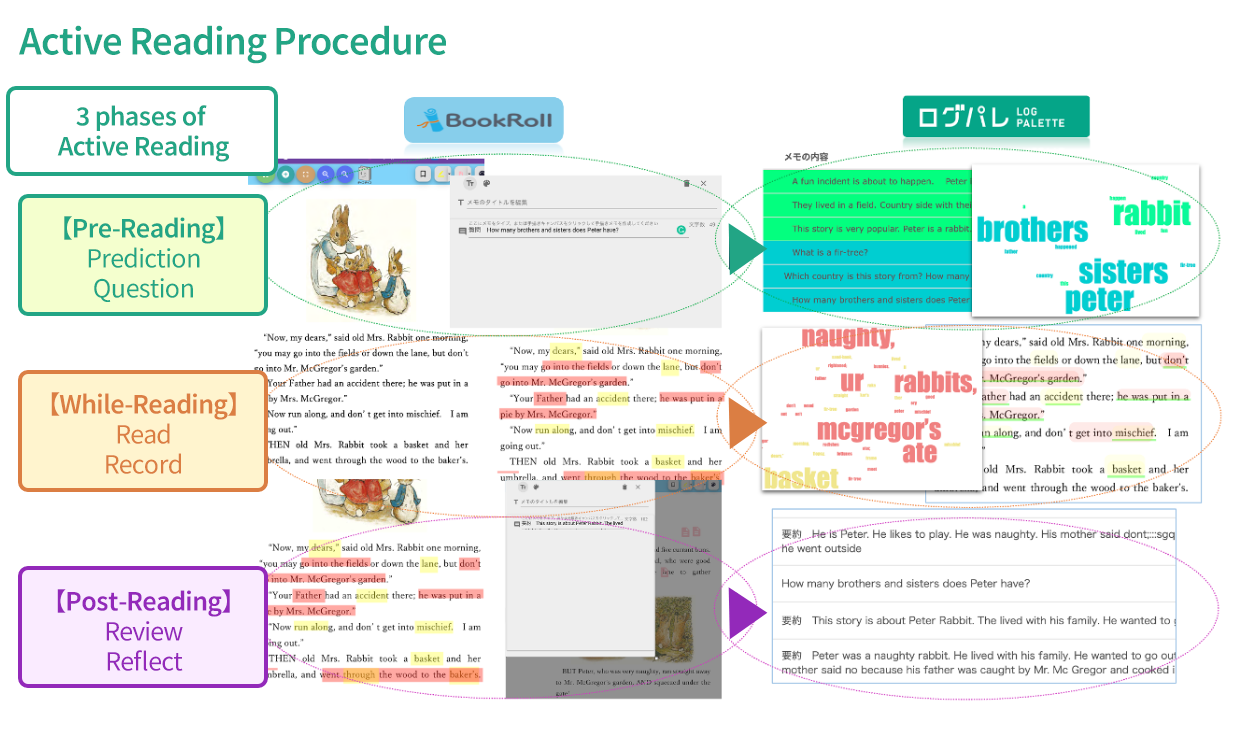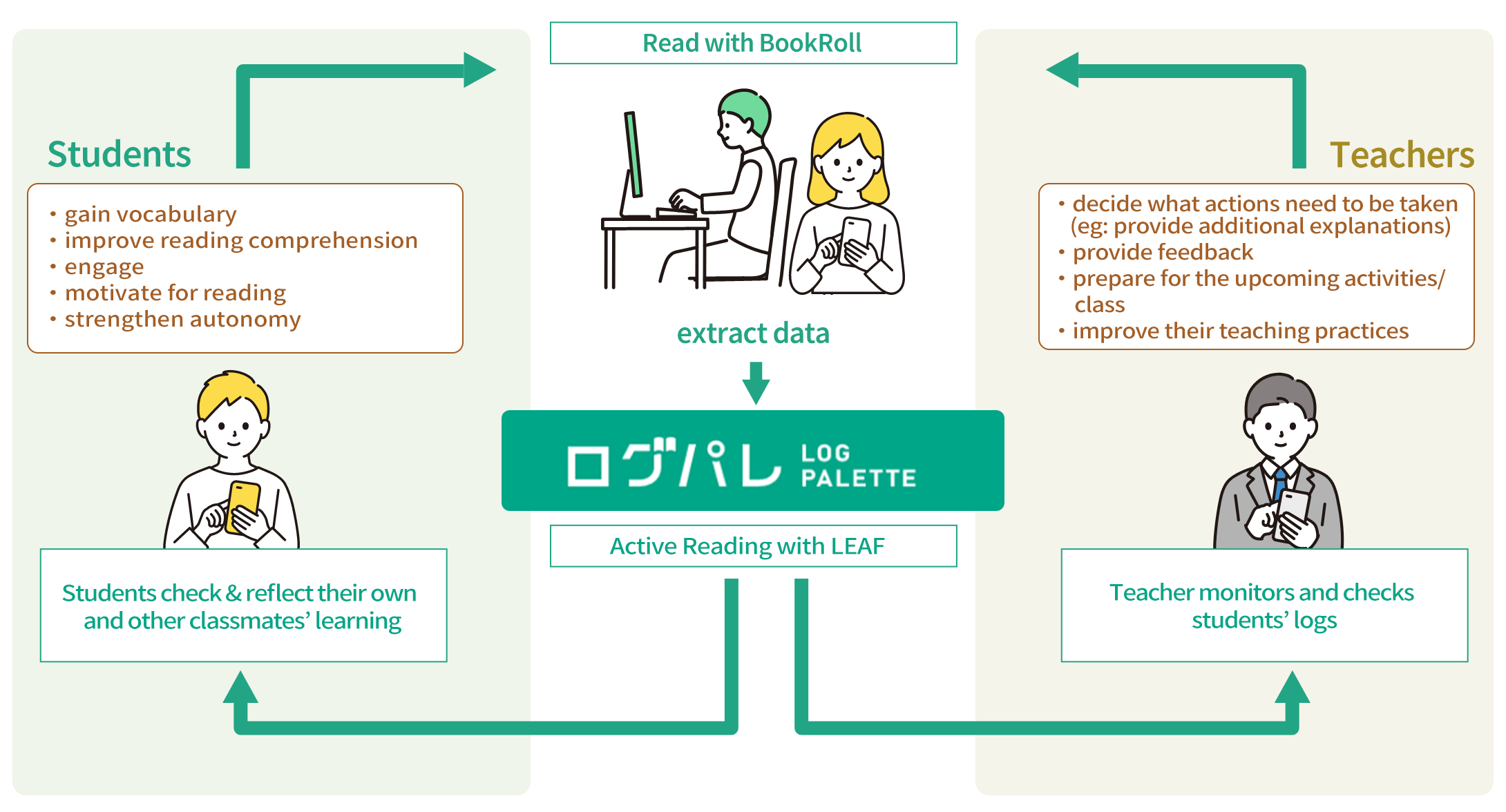- The LEAF System
What is the LEAF System?
- BookRoll
BookRoll: Digital Teaching Material Distribution System
- LogPalette
LogPalette: Learning Record Analysis Tool
- Jp
What is LogPalette?


This function visualizes the learner’s status of comprehension,
using log data.
Active Reading means attempting reading activities actively and critically. It is a reading strategy that improves reading performance and skills by being deeply involved in the structure and content of sentences. Active Reading activities involve such as predicting the story outline, creating questions about the content, highlighting, and summarizing the story. In Active Reading using LEAF, the learner’s reading process is divided and visualized into three phases: “pre-reading,” “while-reading,” and “post-reading.”

In the LogPalette, learners have the opportunity to reflect on their own reading efforts and those of their peers. They can identify places that need improvement and confirm key points. Teachers are able to assess their students’ reading process by monitoring their understanding, prior knowledge, use of acquired knowledge, and thought process while reading. Based on these observations, teachers can determine the appropriate action to take next. Through the use of the Active Reading function of BookRoll and reflection with LogPalette, learners can develop their reading comprehension skills which include “searching for information,” “predicting,” “understanding,” “evaluating,” “judging,” “applying,” and “being independent” in a comprehensive manner.
By reflecting on their own and other students’ reading attempts, learners can confirm what they have done and what they have not done, and clarify what they should do next.

The “Pre-Reading,” “While-Reading,” and “Post-Reading” phases can be directly used as the introduction, class main contents, and reflection as lesson design, which can be flexibly adjusted. Active Reading dashboards are also available as part of class activities.

BookRoll and Active Reading Dashboard are versatile tools that support Active Reading learning inside and outside of the classroom. They can be used for individual learning, group learning, and remote learning in class, flipped learning, self-regulated learning, and self-directed learning outside the class.

